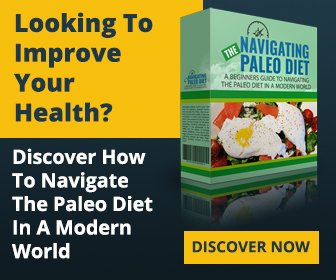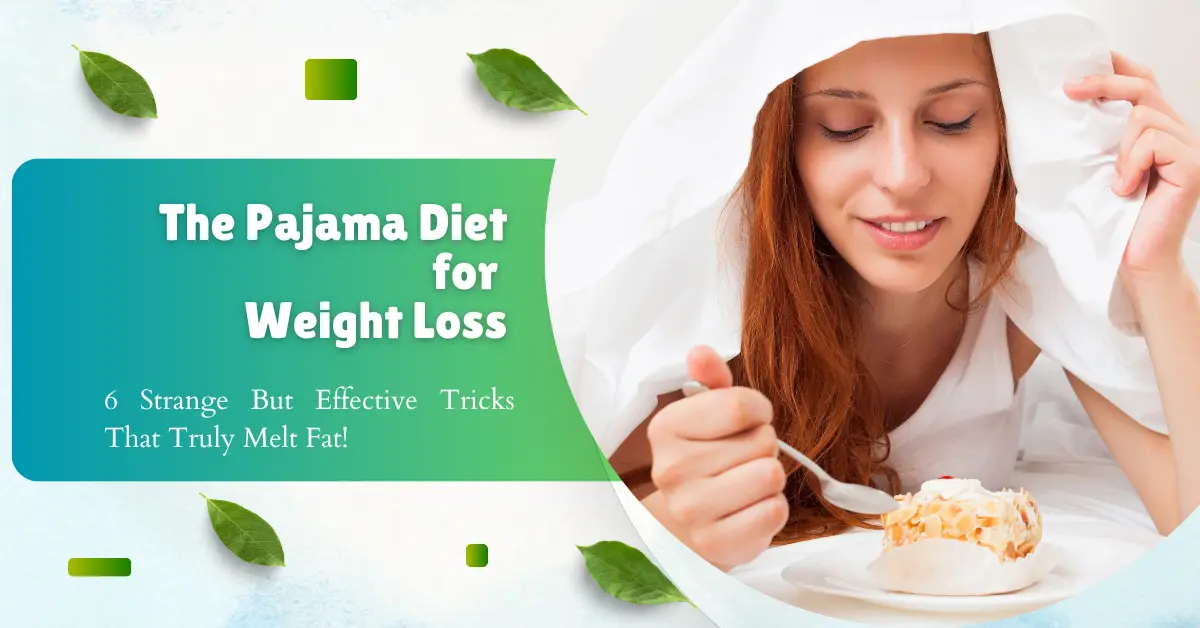The Paleo Diet for fat loss is gaining larger interest because of its natural and sustainable approach to weight management. Paleo diet for fat loss is determined on whole, unprocessed foods such as lean meats, fish, vegetables, fruits, nuts, and seeds, while denying grains, dairy, refined sugars, and processed ingredients. Paleo diet for fat loss is comparatively different from established diets that generally rely on calorie restriction or artificial changes.
Navigating Paleo Diet for Fat Loss – Comprehensive E-Book

How To Eat Like Your Ancestors
- Whether you’re a Paleo fan or not, there’s certainly common ground between those who follow the diet and everyone else. Obviously, our ancestors were doing something right when it came to eating and exercise. Food wasn’t simply grabbed off a shelf, tossed into a cart, and driven to your home. It was hunted, killed, prepared, and cooked. Nowadays, disease abounds, and even with advances in technology, our lifespans are shortening as lifestyle choices create epidemics far out of our collective control. Little kids are obese, and twenty-some-year-olds are suffering heart attacks. So where exactly did we go wrong, and is there a way to fix it?
- It wasn’t until 10,000 years ago that our diets shifted from only those things we could hunt, fish, and gather towards the state we’re in today. Because the number of hunter-gatherers left in the world is so slim, researchers are trying to learn about their way of life before it’s too late. While the development of agriculture seemed to be a step in the right direction, it’s up for debate when we assess the current health state of the majority of the world’s population.
Paleo diet helps for fat loss by improving metabolic function, decreasing inflammation, and supporting satiety through nutrient-dense meals. In this review, we will try to provide a complete comparison between the Paleo Diet and other traditional dieting methods, which may help you to understand why you choose it as one of the healthier nutritional diet plans for effective fat loss at home.
What is The Paleo Diet for Fat Loss?
The Paleo diet for fat loss is ingrained in the concept of eating from the way of our ancestors did during the Stone Age, between 2.6 million and 10,000 years BC. This nutritional style underlines entire, unprocessed foods and disregards modern agricultural products thought to contribute to weight gain and health problems. By excluding grains like wheat, rice, and barley as well as dairy products such a cheese and yogurt, the Paleo diet for fat loss aims to cut inflammation and alleviate blood sugar levels, main features in effective fat loss.
As an alternate, it supports nutrient-dense foods containing lean meat like chicken, beef, pork, and fish, accompanied by fresh vegetables, fruits, nuts, seeds, and natural fat sources such as olive oil, coconut oil, and fish oil. The supporters of the Paleo diet for fat loss frequently report an enhancement in energy levels, metabolism, and overall body structure.
What are the Ideologies of the Paleo Diet for Fat Loss?
Implementing properly of the Paleolithic diet properly for fat loss, you need to follow below principles:
Reduce Calorie intake: Reducing daily calorie intake is a crucial technique for weight loss. Hence, picking up foods that can make you feel full for a long time is essential because it helps manage hunger and leads to eating less. Researches show that the Paleo diet for fat loss can contribute to greater satiety as compared to other popular diets. It focuses on high-protein and fiber foods, which are considered to slow down digestion and extend the feeling of fullness. Studies also show that the Paleo diet for fat loss may trigger the release of hunger-controlling hormones such as GLP-1, PYY, and GIP, which help to reduce food consumption and improve appetite control.
Low Carbohydrates: Reducing carbohydrate consumption is an established way of managing extra weight, often more effective compared to other conventional low-fat diets. The Paleo diet for fat loss promotes reducing common carbohydrate-dense foods like bread, rice, and potatoes. Though not all carbohydrates are harmful, controlling them may help to reduce overall calorie consumption and promote a more effective method of fat loss.
Protein-rich foods: Protein plays a key role in weight loss by enhancing metabolism, decreasing hunger, and balancing the vital hormones that control fat storage and appetite. Paleo diet for fat loss is an excellent source of protein-rich foods like lean meat and eggs can help to enhance satiety and preserve muscle mass, making it easier to burn fat for a long time results.
Avoid processed foods: Deeply processed foods are normally high in calories and low in nutrients, promoting obesity, which leads to poor health. The Paleo diet for fat loss avoids these foods and concentrates on the substitution of lean proteins, fresh fruits and vegetables, and healthy fats, nutrient-based options that help with fat loss and overall well-being.
Avoid refined sugar: Refined sugar is the main cause of empty calories, which are free from nutritional value, while producing the great risks of heart disease and diabetes. The Paleo diet for fat loss eradicates refined sugars, promoting natural sweetness from the entire foods, such as fresh fruits and vegetables. This change not only decreases calorie consumption but also helps improve metabolic health and sustainable weight loss.

===> Is The Paleo Diet Right For The Whole Family? Click Here <===
What are the Key Benefits of the Paleo Diet for Fat Loss?
The main purpose of the Paleo Diet for fat loss is to try to restore the method of eating that early humans consumed in the Stone Age. This diet sets out several particular goals:
Improve Overall Health: The main focus of the Paleo diet for fat loss is to boost overall health by targeting nutrient-rich, unprocessed foods. The followers of the Paleo diet claim that by eliminating grains, dairy, and processed ingredients and, as a substitute, consuming lean meats, fish, fruits, vegetables, and organic fats, the body consumes key nutrients that support heart health, regulate blood sugar levels, and reduce inflammation.
This organic and whole-food technique not only supports fat loss but also aids in preventing chronic diseases which making it a comprehensive choice for those looking for their weight management and overall wellbeing.
Helps for Weight Management: The Paleo diet for fat loss is commonly used as an effective solution to weight loss or healthy weight management. By removing processed foods, refined sugar, and high-glycemic-index elements, the paleo diet for fat loss helps to regulate blood sugar levels and reduce hunger. This emphasis on the whole makes it easier for individuals to balance their calorie consumption and promote continuous weight management.
Prevention from Inflammation: The Paleo Diet for fat loss can help reduce inflammation by removing common triggers such as sugar, grains, and legumes. As an alternative, it concentrates on nutrient-rich foods which help to a healthy immune response and reduce inflammatory stress on the body.
Promotes Natural Way of Life: By implementing a diet parallel to ancient times, the Paleo diet for fat loss aims to boost a lifestyle that is closest to nature and the way our ancestors lived.
Pros
- Nutrient-dense, low-calorie foods that help to lose weight efficiently
- Nutrient-dense, low-calorie foods that help to lose weight efficiently
- The paleo diet for fat loss is high in glycemic index, which helps to regulate blood sugar levels
- It eliminates trans and saturated fats that may reduce cholesterol levels and the risk of heart disease.
- It promotes higher consumption of vegetables and fruits, which deliver a sufficient amount of fiber and vitamins.
Cons
- The Paleo Diet for fat loss removes grains, beans, and dairy products that may cause a lack of protein and calcium, which are the key nutrients required for healthy muscle and bones.
- Some of the foods of the Paleo diet, such as grass-fed meat and seafood, are more expensive than others.
- Decreasing several important foods from your diet can be challenging for maintaining your daily life.
What Foods are Allowed to Eat in the Paleo Diet for Fat Loss?
The Paleo diet for fat loss targets on consuming whole foods, unprocessed foods that our ancestors might have eaten in the Paleolithic time. A comparable meal plan includes variations of nutrient-rich foods like meats, fish, vegetables, fruits, nuts, and healthy fats.
In meat selections, you can eat beef, lamb, chicken, turkey, and pork, specifically sourced from grass-fed or minimally processed sources. Fish and seafood like salmon, haddock, shrimp, and shellfish are also necessary, with wild-caught varieties being the exceptional choice. You can take Eggs, whether from chickens or ducks, a great source of protein.
The variety of vegetables like broccoli, kale, peppers, onions, carrots, and tomatoes should form a large part of daily consumption. Fruits such as apples, pears, berries, and avocados are also accepted, yet high-sugar fruits should be eaten in a balanced way. Root vegetables like sweet potatoes and turnips provide valuable carbohydrates. For natural fats, the diets include natural oils like extra virgin olive oil, coconut oil, and avocado oil.
Nuts and Seeds – you can eat almonds, walnuts, sunflower seeds, and pumpkin seeds, which are an abundance of protein and healthy fats. Conclusively, natural extracts like sea salt, garlic, turmeric, and rosemary can be eaten to season food without relying on processed flavors.
Which Drinks are allowed on the Paleo Diet for Fat Loss?
Water: Water plays a key role in hydration and overall health. It helps with executing key roles like ingestion, energy levels, and skin health. Staying hydrated helps you to feel your best, so make sure to drink sufficient water daily.
Green Tea: Green tea and herbal tea, when enjoyed without sugar, are great choices on the Pleao Diet for fat loss. They deliver antioxidants and hydration without additional sugars, making them a perfect choice for a clean, natural lifestyle.
Coffee: Black coffee or coffee with a little touch of cream, without sugar, is perfect for the Paleo Diet for fat loss. Just be careful of using limited sugar and dairy to stay in line with its standards.
Sugarcane Juice: Fresh sugarcane juice is a naturally sweet, cool choice, but it is high in sugar. You can enjoy it in a balanced way to keep your consumption adequate.
What Foods Are Prohibited on the Paleo Diet for Fat Loss?
The Paleo Diet eliminates many foods and ingredients. Here is a list of foods and ingredients to avoid on the Paleo Diet:
Sugar and sweet Juices: This includes white sugar, brown sugar, honey, agave syrup, grapefruit syrup, and sugar-including stuff like candy, pastries, ice cream, and soda.
Grains: Including bread, pasta, sandwich bread, whole wheat, rye, barley, and grain products like breakfast cereals, cereal cakes, and noodles.
Beans and their related Products: Beans, lentils, peanut butter, and bean products such as kidney beans, soy, and soy milk.
Milk and Its Related Products: Not to drink milk, particularly low-fat milk. Full-fat dairy products like butter and cheese should also be limited.
Processed vegetable oils: The oils such as soybean oil, sunflower oil, cottonseed oil, corn oil, grapeseed oil, safflower oil, and hydrogenated forms of oil.
Artificial sweeteners: Such as aspartame, sucralose, cyclamates, saccharin, acesulfame potassium. Instead, you can use organic sweeteners such as honey or xylitol.
Typical Menu for a Paleo Diet (1 Week Menu)
A common menu for a Paleo Diet dieter for a week is as follows:
Breakfast | Lunch | Dinner
Day One: Fried eggs with salad and fresh fruit, Chicken salad with olive oil, sunflower seeds, and raw vegetables, Grilled lean beef, with steamed vegetables
Day Two: Grilled salmon with coconut oil and a somewhat fruit. Salmon Salad with Flaxseeds and Raw Vegetables, Grilled Chicken with Mixed Vegetables
Day Three: Eggs and Bacon, with Fresh Fruit, Salmon with Butter and Steamed Vegetables, Pork Stir-Fry with Lettuce and Sunflower Seeds
Day Four: Steamed Eggs with Flaxseeds and a Little Fruit Sandwich with Raw Vegetables and Lean Chicken, Beef Stir-Fry with Mixed Vegetables
Day Five: Pan-Fried Eggs with Vegetables and Fruit, Mashed Salmon with Flaxseeds and Raw Vegetables, Grilled Lean Beef with Mixed Vegetables
Day Six: Grilled Eggs and Salmon with Fresh Fruit, Chicken Salad with Olive Oil and Sunflower Seeds, Grilled Chicken with Mixed Vegetables
Day Seven: Steamed Eggs with Flaxseeds and a Little Fruit Sandwich with Raw Vegetables and Lean Pork Beef Stir-Fry with Mixed Vegetables and Sunflower Seeds.
How to Follow the Rules of the Paleo Diet for Fat Loss?
Once following a Paleo diet for fat loss, dining out does not have to be an experiment. The important decision is to choose a combination that aligns with the principles of the Paleo diet. Take a start by ordering the main dish that kinds of lean meat, fish, or seafood because these are abundant in protein and healthy fats that support fat loss, and try not to choose processed foods, starchy sides like bread or rice, and select nutrient-rich vegetables or a fresh salad.
Make sure your meal is properly cooked in a healthy way, ask for your food to be cooked in olive or coconut oil, both of which are incredible for the Paleo diet for fat loss. Furthermore, drive clear of sugar condiments, dressings, and sauces that can hinder your progress.
Conclusion
Finally, the Paleo Diet for fat loss can be a transformative journey towards a healthier, much better life, which provides not only a slimmer figure but also improved overall well-being. However, it needs commitment, dedication at the beginning; the results are valuable for the efforts. With the right thinking, complete knowledge, and approaches, you will find yourself making smarter food options that connect with your health and fitness goals. Every step you take will bring you closer to a more exciting, energetic version of yourself.









